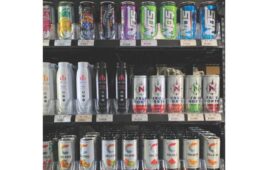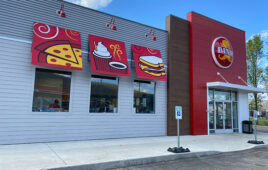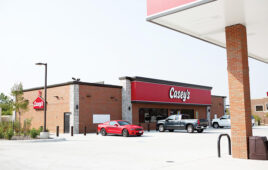 As the c-store landscape evolves, more operators view foodservice as a necessary differentiator and traffic driver for their business.
As the c-store landscape evolves, more operators view foodservice as a necessary differentiator and traffic driver for their business.
Before embarking on a foodservice initiative, c-store operators must recognize it’s a radically different business model from the retail business they’re accustomed to running. Foodservice has different margins and labor needs, and spoilage is a vital part of the equation.
C-stores must also identify whether a proprietary or co-branded program works best for their capabilities. Regardless of which a c-store selects, developing a foodservice culture internally is crucial for running a successful food operation.
“Retailers probably realize they need a food culture for a proprietary program, but they may not think they need it as much for the brand because they believe it’s coming with the program, and it really doesn’t. It has to be developed internally,” said c-store veteran Jerry Weiner, founder of Jerry Weiner Consulting.
Co-Brand Success
Cenex Zip Trip, which operates 36 c-stores in Montana, Wyoming, North Dakota, South Dakota and Minnesota, partners with co-brands to provide foodservice to its customers.
 “The name recognition on co-brands puts you ahead of proprietary brands with your customers because they already know what to expect from prior experience,” said Jon Fleck, Zip Trip merchandising manager. “The cookie cutter program makes it easier to get into, the point-of-sale is exceptional and the training down to an art.”
“The name recognition on co-brands puts you ahead of proprietary brands with your customers because they already know what to expect from prior experience,” said Jon Fleck, Zip Trip merchandising manager. “The cookie cutter program makes it easier to get into, the point-of-sale is exceptional and the training down to an art.”
The chain offers a Hot Stuff Pizza program in three stores and a Godfather’s Express in one store in Fergus Falls, Minn.
Zip Trip also participates in Core-Mark’s fresh program, through which it offers sandwiches, salads, burritos, parfaits and fruit cups. The program makes it easy for Zip Trip to offer consistency in its sandwich cases, receive multiple deliveries per week and receive expert advice from foodservice professionals. Zip Trip also offers a Basilio’s pizza program through Core-Mark at eight stores. Basilio’s includes premade, frozen, personal pan pizzas that Zip Trip cooks in a pizza oven and sells out of a warmer.
“This gives us the opportunity to sell pizza in stores with smaller footprints that can support a food program,” Fleck said.
Zip Trip uses its own employees to run the food programs at all of its sites.
As for training, “Godfather’s has an extensive training course in Omaha, Neb., for our foodservice managers, while Hot Stuff has their trainers train at the store,” Fleck said. “They also have a salesperson on site every other week to take orders, give training and answer any questions we have. Overall, the training is great at teaching you how to be successful in the foodservice arena.”
Asking the Right Questions
Weiner agreed that partnering with a co-brand provides “instant credibility,” due to the brand recognition. But co-brands have various restrictions too, he said, and it’s important to be clear about those restrictions before committing.
 Can someone else open the same co-brand a block away or do boundary rules exist? Will the brand restrict which items you can sell on the c-store side — like roller grill products — or limit your fountain selection? Do you have access to new menu items the brand launches or will some of the most advertised products be unavailable to the c-store version of the program? If the brand features delivery at some locations — and customers expect that — will your location have that option, too?
Can someone else open the same co-brand a block away or do boundary rules exist? Will the brand restrict which items you can sell on the c-store side — like roller grill products — or limit your fountain selection? Do you have access to new menu items the brand launches or will some of the most advertised products be unavailable to the c-store version of the program? If the brand features delivery at some locations — and customers expect that — will your location have that option, too?
“Be leery of brands that tell you they have no royalty fees,” Weiner warned. “You have to buy all your products from them. Trust me, you’re paying a fee. It’s in the cost of goods, which is not a benefit because now you’re paying royalties on your spoilage, which you don’t do if you’re paying the royalty on your sales.”
In other words, investigate, because every brand has a royalty fee somewhere, Weiner advised.
Proprietary Patience
If selecting a proprietary food program, remember the success or failure of the program will impact the value of your c-store brand. When developing a proprietary food brand, you’re also creating the procedures and processes, nurturing the program and making ongoing adjustments to food products and overall execution.
“Understand that it will take three to five years for you to see the real benefits of doing this,” Weiner said. “That’s not a guess. That’s going to happen.”
Step One
Before leaping into any food program — proprietary or co-branded — it’s crucial to have created an effective coffee program and gained experience with a roller grill offering or simple breakfast program.
“If they haven’t mastered the basics of operating foodservice in those more simplistic programs, they’re going to have a tremendous issue, whether it’s branded or proprietary,” Weiner said.




